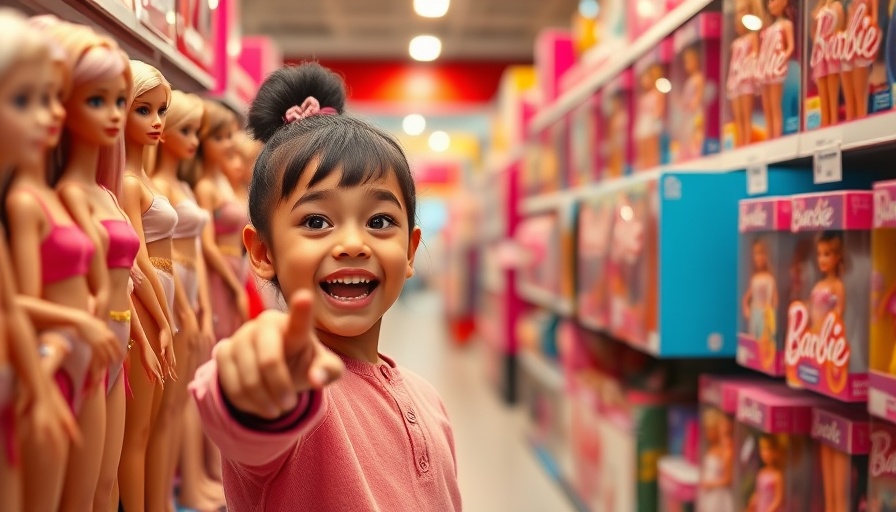
Toy Prices and Tariffs: What's Happening at Mattel?
Recent comments from Mattel's Chief Executive, Ynon Kreiz, indicate a potential shift in the pricing strategy for their popular toys, including Barbie and Hot Wheels, amidst the backdrop of new tariffs. The 145% tariffs imposed by the Trump administration on Chinese imports could mean toy prices might become significantly higher, affecting many consumers who love these classic products.
Understanding the Impact of Tariffs on Consumers
Tariffs, while aimed at boosting the domestic economy and promoting American-made products, frequently have immediate repercussions for consumers. Kreiz highlighted a poignant remark from President Trump, who suggested that children may need to adjust their expectations, adopting a mindset that fewer dolls might suffice. This raises questions about the overall affordability of toys during economically challenging times.
Mattel's Strategic Response to Tariffs
In addressing the tariffs, Mattel aims to 'fully offset the potential incremental cost impact' by exploring various financial strategies. The company reported a pause in its financial guidance for the year, indicating a cautious approach to navigating the unpredictable market landscape, particularly as they expect tariffs to begin affecting operational costs soon. Balancing product quality with competitive pricing will be paramount for the toy maker in maintaining their market position.
The Larger Toy Industry and Tariff Effects
The toy industry as a whole has expressed concerns over the tariffs, with organizations like the U.S. Toy Association advocating for zero tariffs specifically on toys. Kreiz’s comments encapsulated this sentiment, arguing for the importance of toys in childhood development and the access they provide for families across the economic spectrum. When the prices of toys rise due to tariffs, it can limit opportunities for children to play, learn, and develop—a critical component of early growth.
Looking Ahead: The Future of Toy Production
Interestingly, Mattel’s strategy includes reducing reliance on Chinese manufacturing to diversify production across multiple countries. Currently, about 80% of toys sold in the U.S. are produced in China. By shifting this balance, Mattel aims to mitigate risks associated with tariffs while ensuring that toys remain accessible to American families.
Final Thoughts: What This Means for Families
As the toy industry adapts to changes stemming from tariffs and global economic pressures, families may soon face tougher choices regarding toy purchases. While the intent behind tariffs is to support American jobs, the immediate fallout appears to be pushing consumers toward higher expenses. Understanding the dynamics of these tariffs is important for parents making decisions about their children's playtime.
 Add Row
Add Row  Add
Add 




 Add Row
Add Row  Add
Add 

Write A Comment